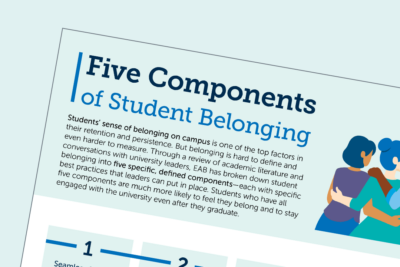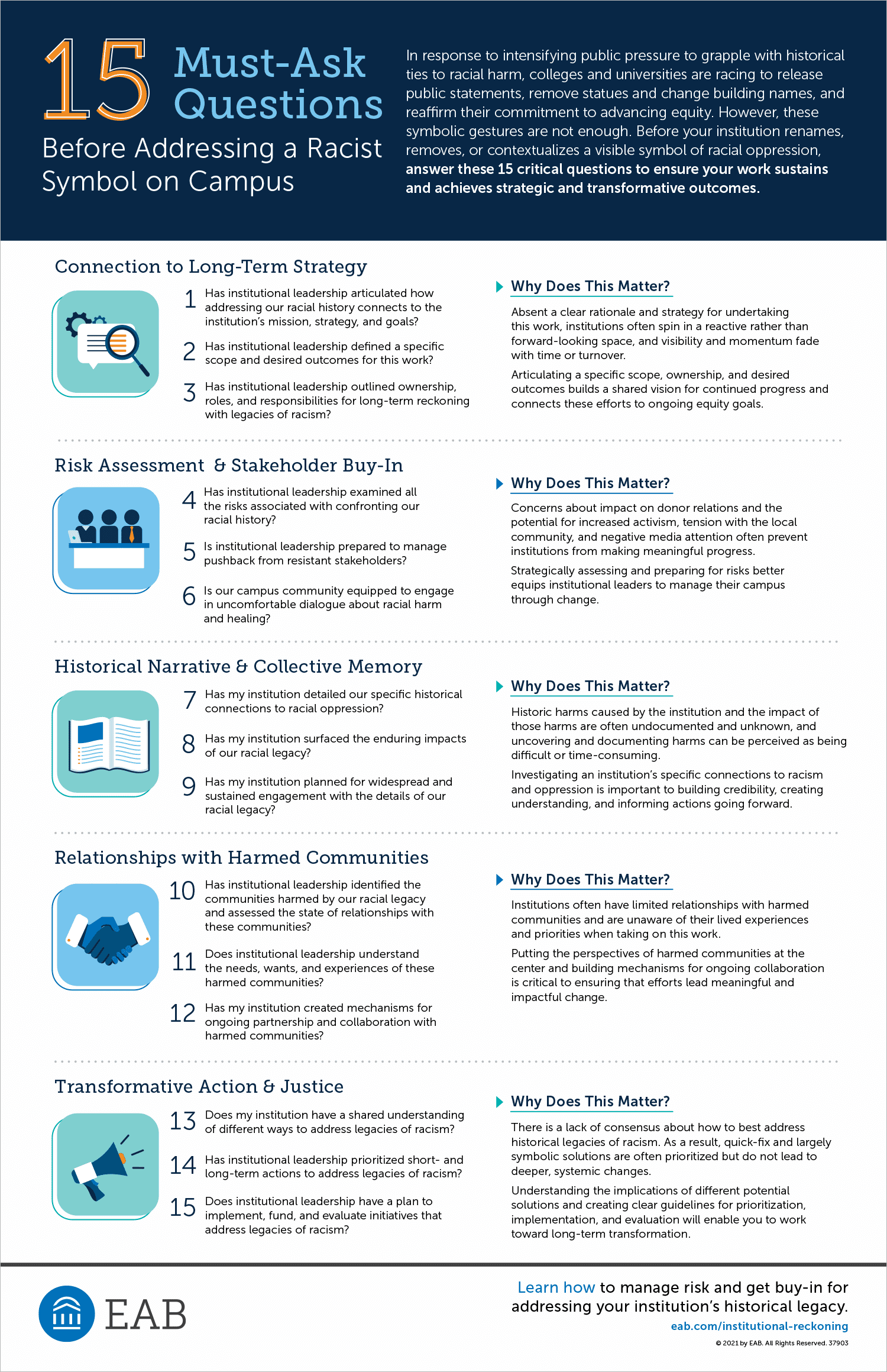Infographic
15 must-ask questions before addressing a racist symbol on campus
In response to intensifying public pressure to grapple with historical ties to racial harm, colleges and universities are racing to release public statements, remove statues and change building names, and reaffirm their commitment to advancing equity. However, these symbolic gestures are not enough. Before your institution renames, removes, or contextualizes a visible symbol of racial oppression, answer these 15 critical questions to ensure your work sustains and achieves strategic and transformative outcomes.
More Resources

Research Report
Federal Policy Primer and Discussion Guide: DEI and Civil Rights
Learn what federal policy changes mean for higher ed regarding DEI efforts, gender identity protections, free speech, Title…
Strategic Advisory Services

Infographic
5 components of student belonging
Students’ sense of belonging on campus is one of the top factors in their retention and persistence. Through…
Strategic Advisory Services

Resource Center
Inclusion and Belonging Resource Center for Higher Education
We've compiled best-practice research, tools, and insights to help college and university leaders foster inclusion and belonging for…
Strategic Advisory Services
